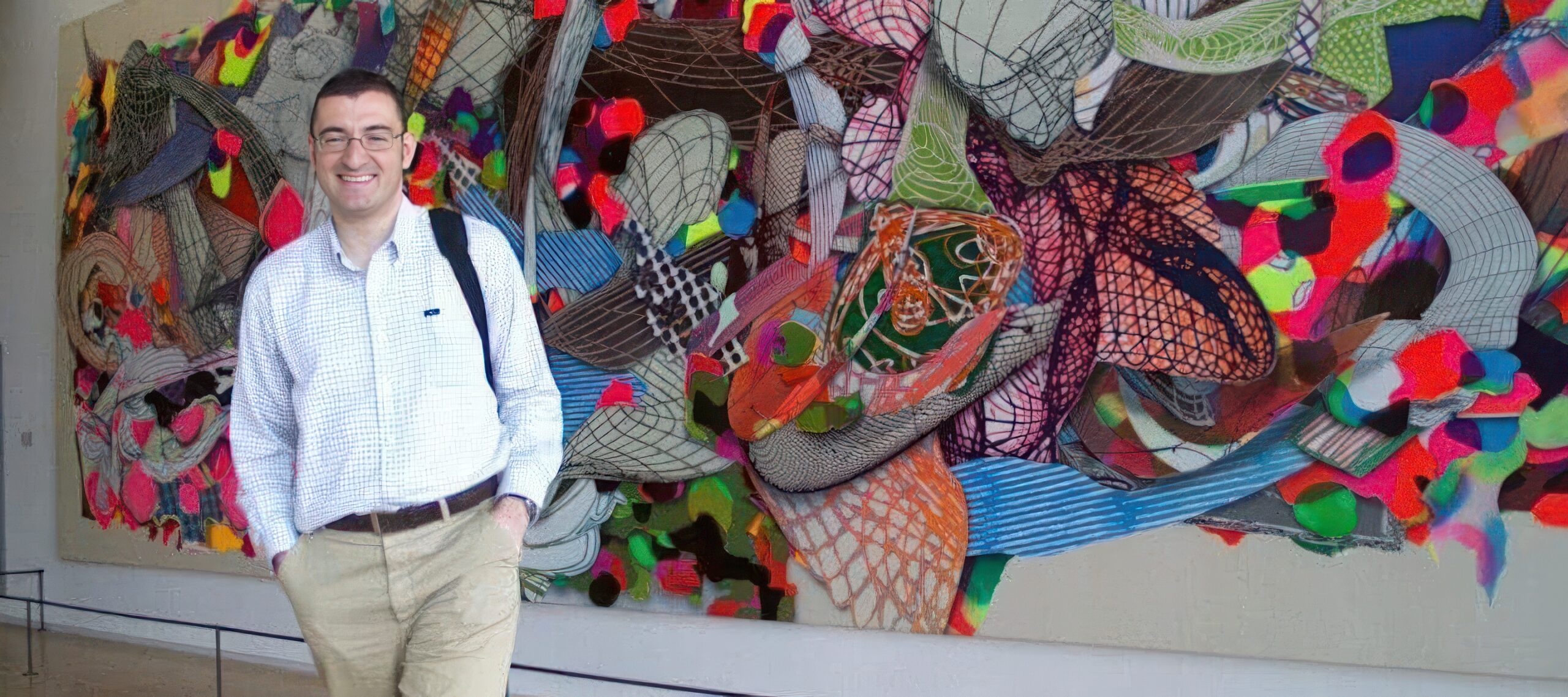


“Massaging” Stakeholders: The Art of Project Persuasion
Tickling Resistance Away in the World of Project Management
In project management, where change is the only constant, convincing stakeholders to hop on the project bandwagon can sometimes feel like trying to herd cats.
Enter the art of “massaging” – a whimsical yet effective negotiation technique to soothe the scepticism and stiffness of even the most reluctant stakeholders.
The Dance of Diplomacy:
Picture this: You, the fearless Project Manager, armed not with spreadsheets but with the finesse of a skilled masseuse, delicately navigating the corridors of corporate resistance. It’s not about arm-twisting; it’s about finding those knots of uncertainty and gently kneading them away.
The Three Pillars of Massaging:
- Understanding the Tension Points:
- Before diving into the massage parlour, take the time to understand what’s causing the tension. Is it fear of the unknown? Scepticism about project outcomes? Speak the stakeholders’ language.
- The Art of Persuasion:
- Like a massage therapist customising their approach to each client, tailor your persuasion techniques. Highlight the benefits, share success stories, and sprinkle a bit of humour to lighten the mood.
- Building Trust Through Communication:
- Communication is the aromatic oil that makes the massage smoother. Keep stakeholders in the loop, address concerns promptly, and let them know their input matters. It’s a two-way conversation, not a monologue.
Disclaimer: The views expressed in each blog entry are mine and do not necessarily represent the views of my employer.

Finding Fulfillment in the Project Management Journey
Introduction
Project management is an intricate dance of balancing resources, scope, time, and people. It requires a unique set of skills, from executing complex plans to mitigating risks. Yet, amidst the hustle and bustle of deliverables and deadlines, it’s crucial to pause and reflect on what truly mobilizes us as project managers. What brings personal fulfilment and meaning to our roles? Let’s embark on a journey to explore the deeper essence of project management and the invaluable rewards it offers beyond completing a project.
The Art of Resourceful Management
At the heart of project management lies the art of resource management. Efficiently allocating time, budget, and talent is a skill that defines our profession and serves as a testament to our adaptability and strategic thinking. The satisfaction comes not only from meeting these challenges head-on but also from witnessing the collective effort transform into tangible progress.
Scope, Time, and the Canvas of Possibility
Managing scope and time is akin to painting on a canvas. It requires precision, creativity, and a keen eye for detail. It’s about striking the right balance between ambition and pragmatism. As project managers, we have the privilege of turning ideas into reality seeing the evolution of a project from its inception to its fruition. The thrill lies in watching the pieces come together, each stroke contributing to a masterpiece.
Mobilizing Teams: A Symphony of Collaboration
Bringing together individuals with diverse skills, backgrounds, and perspectives is an art. Mobilizing teams is about orchestrating a symphony of collaboration, where each member plays a crucial note. Witnessing the harmonious convergence of talents and ideas is a source of immense pride and fulfilment. It’s a reminder of the transformative power of teamwork.
Mitigating Risks: Navigating the Unknown
In the realm of project management, risks are inevitable. Yet, our ability to navigate these uncertainties sets us apart. Mitigating risks is a testament to our resilience and foresight. It’s about being the steady hand on the wheel, guiding the project through stormy waters. The satisfaction comes from averting disasters and the knowledge that we’ve fortified the project against future challenges.
Deliverables, Benefits, and Value: Leaving a Lasting Impact
Deliverables are more than just tangible outputs; they represent the culmination of hard work, dedication, and expertise. They signify our commitment to excellence and ability to meet and exceed expectations. Beyond deliverables, we aim to provide lasting benefits and value. It’s about leaving a legacy of positive change that extends far beyond the project’s completion.
The Personal Enjoyment Factor
While we navigate through the intricacies of project management, it’s essential not to lose sight of our personal enjoyment. We find our fulfilment in the moments of collaboration, the triumphs over challenges, and the satisfaction of a well-done job. Each project is a unique journey, an opportunity to learn, grow, and find joy in our craft.
Conclusion
As project managers, we are entrusted with turning ideas into reality. Challenges, triumphs, and moments of personal enjoyment mark our journey. It’s about more than just completing projects; it’s about leaving a lasting impact and finding fulfilment in our roles. So, let us continue to embrace the art and science of project management with passion, purpose, and a commitment to excellence. Ultimately, it’s about the projects we complete, the lives we touch, and the legacy we leave behind.
Disclaimer: The views expressed in each blog entry are mine and do not necessarily represent the views of my employer.

Deep dive into the ocean of the IT Risk Management
The recent tragic incident involving the submersible during the deep dive into the Titanic wreck highlights the critical importance of risk management, risk appetite, and risk acceptance.
By examining this event and drawing parallels to an IT project, we can gain valuable insights into how Project Owners assess risks and make decisions based on their risk appetite.
In the case of the ill-fated submersible, the explorers took a significant risk by diving with a vessel that had not undergone extensive testing. Similarly, when implementing an IT system, the Project Owner must assess the risks associated with a delivered system that may need to be thoroughly vetted. In both instances, the decision-makers are tasked with carefully evaluating potential consequences and making informed choices regarding risk management.
Effective risk management in project management involves identifying, analysing, and mitigating potential risks to ensure project success. The tragedy surrounding the submersible raises concerns about the design and maintenance of the craft. Similarly, in an IT project, risks may include system compatibility issues, security vulnerabilities, or inadequate user training. These risks can be evaluated through comprehensive risk assessments, and appropriate mitigation strategies can be implemented.
Risk appetite refers to an organisation’s willingness to accept risks to pursue project objectives. The explorers’ decision to proceed with the deep dive, even though concerns about the submersible’s safety, demonstrate a higher risk appetite for their adventurous endeavour. Similarly, in an IT project, an organisation may have a higher risk appetite when implementing cutting-edge technologies or innovative solutions that have the potential to transform its business processes. However, it is crucial to align risk appetite with the project’s strategic goals to avoid excessive risk-taking that could jeopardize project success.
Risk acceptance is a vital aspect of risk management and project execution. The submersible explorers accepted the risks associated with a vessel that had raised red flags, acknowledging the dangers. Likewise, in an IT project, there may be situations where certain risks cannot be entirely eliminated or where the cost of mitigation outweighs the potential consequences. In such cases, a conscious decision to accept a certain level of risk may be made, provided it aligns with the established risk appetite and is based on a thorough evaluation of potential outcomes.
The tragic event serves as a reminder that assessing risks is crucial in both deep-sea exploration and IT projects. It emphasises the need for comprehensive risk evaluations, prompt resolution of red flags, and transparent communication about potential risks and concerns throughout the project lifecycle.
By integrating effective risk management practices, clearly defining risk appetite, and making informed decisions regarding risk acceptance, project owners can enhance project outcomes and safeguard the interests of all stakeholders. Whether venturing into uncharted territories or implementing new IT systems, the lessons learned from tragic events underscore the significance of diligent risk assessment and mitigation to ensure project success and safety for all involved.
Disclaimer: The views expressed in each blog entry are mine and do not necessarily represent the views of my employer.

Chapter 2: Mr Bi, Ms Ased and their hidden prejudice
Amidst the bustle of Ulysses‘ working day, he crossed paths with Mr Bi and Ms Ased. Both of them were two managers with the same behaviour. With a distorted perception of their worth, they were convinced of their uniqueness and superiority over others. Ms Ased, ever the diplomat, spoke and acted with impeccable political correctness, masking her true sentiments beneath a thin veneer of politeness.
A keen observer, Ulysses recognised the layers of prejudice concealed beneath her charm. Mr Bi had a peculiar habit of associating solely with individuals of equal or higher hierarchical standing, dismissing those beneath her station with disdain. Genuine praise or acknowledgement for those lower in the hierarchy was anathema to him, never to be uttered or considered.
While Ms Ased may have excelled in some aspects of her role, Ulysses understood the danger of her influence in the workplace. Her distorted perception of worth and the toxic air she exuded poisoned the atmosphere, inhibiting collaboration and fostering an environment of superiority and exclusion.
Ulysses observed this situation with a raised eyebrow. He recognises the eternal flux of workplace dynamics, where individuals like Mr Bi and Ms Ased became trapped in their self-perceived superiority. A behaviourist would emphasise the need for harmony and balance, urging a collective effort where all opinions and contributions are respected, regardless of hierarchical positioning.
As Ulysses navigated the workplace corridors, he chose to steer clear of Mr Bi’s influence. He sought solace in the company of those who recognised the inherent value of every individual, regardless of their position in the hierarchy. Ulysses understood that actual progress could only be achieved when the barriers of order and prejudice were dismantled, allowing the brilliance of diverse perspectives to shine through.
Bi & Ased are fictional characters and personas created based on inspirations from James Joyce, Homer and Heraclitus.
More stories of Ulysses in the next Blog article.
Disclaimer: The views expressed in each blog entry are mine and do not necessarily represent the views of my employer.

Chapter 1: Do Nothing—the Story of Mr Opaque and his denial to change
Ulysses read the news this morning: Opaque (one of his clients) went crazy, and he never returned.
Opaque was a man of routine. He woke up at the same time every morning, ate the same breakfast, and took the same route to his office at Stability Co. He was content with the predictability of his life, and any deviation from his usual pattern made him uneasy.
Stability Co. was a business that thrived on stability and consistency. However, as time passed, new regulations were put in place, and the company was required to embrace change and adapt to new technologies and methods. But Opaque was reluctant to do so.
He didn’t see the point in changing something already working well. “If it ain’t broke, don’t fix it,” he would say. He believed his way of doing things was the best, and he saw no reason to change it.
Opaque’s company fell behind as the world around him continued to evolve. Customers started to look elsewhere for more modern and innovative solutions, and the company’s profits began to suffer.
But Opaque remained stubborn, insisting on staying the course. He refused to acknowledge the changing times and continued running his business as always. His employees grew frustrated and restless, but he refused to listen to their ideas.
In the end, Opaque’s refusal to adapt proved to be his downfall. Stability Co. went bankrupt, forcing him to close its doors for good. As he looked back on his life, Opaque realised too late that his insistence on stability had led to his downfall. Sometimes, change is necessary for survival, and those who refuse to adapt will inevitably be left behind.
Opaque is a fictional character and persona created based on inspirations from James Joyce, Homer and Heraclitus.
More stories of Ulysses in the next Blog article.
Disclaimer: The views expressed in each blog entry are mine and do not necessarily represent the views of my employer.

The journey of Ulysses in Project Management and the value of PM² methodology
Ulysses is a seasoned project manager with years of experience leading European projects. However, he often needed to work on dealing with inefficiencies and rising costs, which weighed heavily on the taxpayers’ money. Determined to find a solution, he delved into research and stumbled upon the PM² Project Management methodology developed by the European Commission.
Intrigued by its promises of efficiency and effectiveness, Ulysses decided to try it. He was pleasantly surprised by the methodology’s openness and lean-approach. It emphasized collaboration, transparency, and the inclusion of stakeholders from the project’s inception. Ulysses realized this fostered a sense of ownership and commitment among team members, leading to better outcomes.
One of the most significant benefits Ulysses experienced was the reduction in costs. The PM² methodology provided clear guidelines and templates, simplifying project management processes and eliminating unnecessary bureaucracy. This streamlined approach allowed Ulysses to optimize resources and make informed decisions promptly.
Furthermore, Ulysses appreciated the easy-to-use nature of the PM² methodology. It provided a structured framework that was adaptable to various project types and sizes, making it accessible to both experienced and novice project managers. The methodology’s comprehensive documentation and training materials further enhanced its user-friendliness.
As Ulysses implemented the PM² methodology in his projects, he witnessed a remarkable transformation. The projects became more streamlined, and the teams worked cohesively towards their goals. The benefits of the methodology were tangible: efficient project delivery, cost savings, and increased stakeholder satisfaction.
Ulysses became a staunch advocate for the PM² methodology, sharing his success stories with other European project managers. With its emphasis on efficiency, effectiveness, and cost reduction, PM² proved to be a game-changer in ensuring that taxpayers’ money was utilized optimally for the benefit of society.
Ulysses is a fictional character and persona created based on inspirations from James Joyce, Homer and Heraclitus.
More stories of Ulysses in the next Blog article.
Cartoon source: Cartoon of Joyce from Sam Slote’s animated lecture Why should you read James Joyce’s Ulysses
Disclaimer: The views expressed in each blog entry are mine and do not necessarily represent the views of my employer.

Emotional intelligence in Agile project management…and one more thing!
Hello, fellow Project Managers! Today I will talk to you about the importance of emotional intelligence in Agile project management.
As a Project Manager coordinating large multidisciplinary projects, I’ve learned one thing: emotions matter.
Let me explain. You see, in Agile project management, the team is everything. Without the team, there is no project. And without emotional intelligence, there is no team.
First of all, as a Project Manager, I need to connect with my team members on a personal level. I need to understand their strengths, weaknesses, and motivations. I need to be able to communicate effectively and build trust. And most importantly, I need to be able to listen to them and understand their perspectives.
Secondly, conflicts and problems are inevitable in any project. It’s how we handle them that makes the difference. Emotional intelligence allows us to manage conflicts respectfully and productively. It enables us to find common ground and work towards a solution that benefits everyone.
Thirdly, Agile project management is all about providing value. Emotional intelligence allows us to understand the needs of our stakeholders and deliver value that meets their expectations. It allows us to be flexible, resilient, and effective in a constantly changing environment.
Let me give you an example. Imagine a hypothetical situation: I lead a multicultural IT project with team members from different countries and backgrounds. We’re on a tight deadline, and tensions are running high. Suddenly, a critical component of the project fails, and we’re faced with a significant setback.
In this situation, emotional intelligence is crucial. I need to be able to manage the emotions of my team members and keep them motivated. I need to communicate effectively across cultural barriers and find a solution that works for everyone. And most importantly, I need to stay calm under pressure and lead my team towards success.
So, my dear friends, remember this: emotions matter in Agile project management. As Project Managers, we must lead with empathy, understanding, and respect. Let’s sprint towards success together, one emotional step at a time!
“Emotional intelligence” | Painting by Adrian Sibley (at Saatchi Art).
Disclaimer: The views expressed in each blog entry are mine and do not necessarily represent the views of my employer.

Taking ownership of our lives (aka everyone “walks” with his head)
My grandfather used to say in Greek, “ο καθένας με την κεφαλή του βαδίζει” or “Everyone walks with his head.”
This phrase encapsulates that we are each responsible for our decisions and actions. Our choices shape our lives, and we must take responsibility for those choices.
Taking ownership of our lives means recognising that we can shape our futures. It means understanding that we are not simply victims of circumstance but active agents. When we take ownership of our lives, we can better identify and work towards our goals. We are more resilient in the face of adversity because we know we can overcome it.
At the same time, taking ownership of our lives means accepting responsibility for our mistakes. It means acknowledging our poor choices and taking steps to correct them. This can be a complicated process, but learning from our mistakes and growing as individuals is essential.
In today’s world, it is easy to feel overwhelmed by the pressures of society. We are bombarded by messages telling us how to think, feel, and act. But as my grandfather quote reminds us, we are each unique individuals with strengths, weaknesses, and perspectives. We can tune out the noise and focus on our goals and aspirations by taking ownership of our lives.
So let us embrace this philosophy and walk confidently with our heads high.
